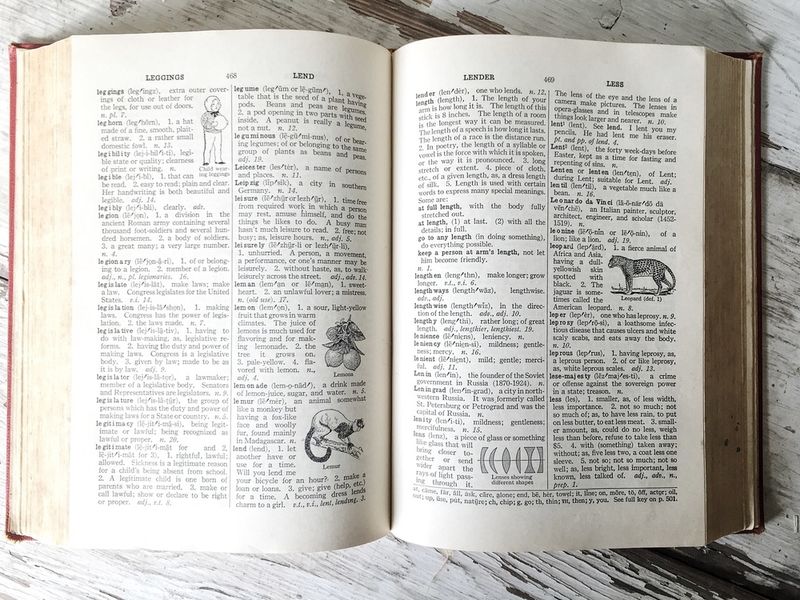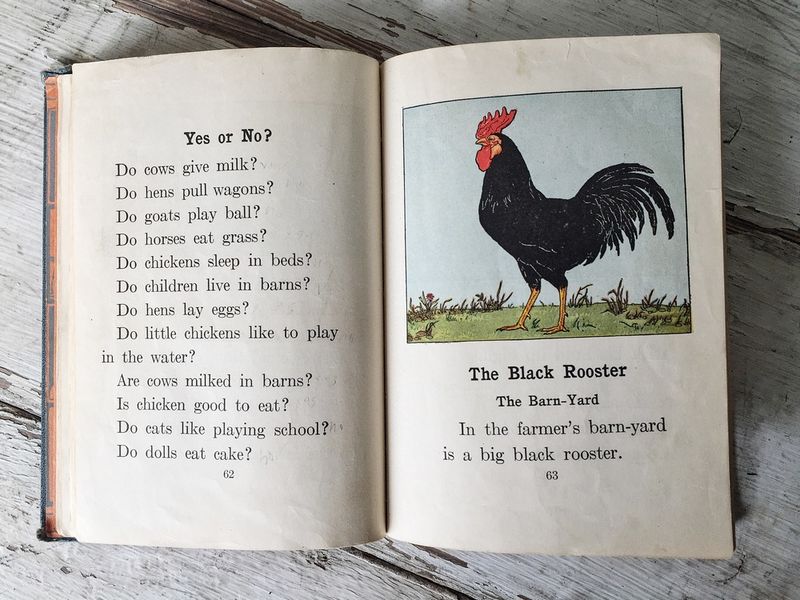Vintage School
My three girls have been in and out of school, but they still prefer it at home. My oldest is 13 and the twins are 8. I'm not inherently against public school in any way, but it's a lot like eating packaged foods. It's food, sustenance, it's all decent, just not the best. Homemade is better. Almost always. Public school is just pre-packaged education. It does the job, and it's better than no school at all, but it's not the best, healthiest situation. Not for us.
We also don't use a set curriculum.
We never have. I'm really flexible about everything because I want so much for learning to be interesting and fun. That doesn't mean I let them do whatever whenever, and there are days it's a bit of a fight, but I know what each of them can handle and what they need to know at a given age (not grade), and I help them get there.
There are a number of good programs out there for homeschooling families, but we have yet to find a one-size-fits-all method that works for us. Some are too vague, others are too restrictive. So we're kind of winging it (and that's okay).
Although I keep a peripheral eye on state standards just to be safe, it's not my guiding force. We're typically led based on whatever vintage book the girls are interested in at the moment, or what comes across my searches at the flea markets and antique stores. Oddly unconventional, for sure, but it works.
Why so old school?
Personally, I hated school. Even when I was good at it, I felt like it was just something to do, another childhood chore. I was doing it for the A, not for the knowledge itself. I suspect that's just human nature, but in case it's not, I want to try things another way. I want to try to make learning a natural, inherent part of life.
I want it to feel like breathing, not like a task, a thing to be checked off a list. "We did an hour of history, two hours of reading, and an hour of math," ought to read "We learned about the history of the American Revolution and the relationship between Britain and the new country just developing. We read a Sherlock Holmes' mystery and learned how to find the cubic mass of a box."

After several years browsing bookstores, teaching stores, libraries, even yard sales and online sources, I keep coming back to these old books. There are so many advantages, but the biggest is the simplicity.
No superfluous graphics
How many cartoons and bright colors do kids need? Is it really helpful? We're finding it's not. The kids are markedly overwhelmed when they pick up a modern workbook and they fight me most with these. But when I give them a composition notebook and an activity from the 1945 spelling book, they're right down to business.

Clear Text
The print is often more readable for kids in older books. When looking through books, I find a gradual shift from the early 1900s to mid-century, and today, with more and more illustrations and fewer words. Instructions and key points are often more difficult to find, and there is generally less "meat" in newer books. Writers of these books seem more intent on keeping kids entertained, but for us, it all just gets in the way.
The simple use of bold and italics is usually enough to get a point across. It also teaches them how to read real life text, like news and magazine articles, books, and all the things as adults they'll need to be able to read. There won't always be imagery to keep them interested.
Physical size
Vintage school books are usually smaller, which makes them easy for little hands to carry and to use. They're lighter too, so when we take school on the go, there's no heavy book bag to lug around. The kids are also less intimidated by smaller books. They tend to think a bigger book means harder or more work.
Shorter lessons
Because of the smaller size, fewer illustrations, and generally less entertainment, lessons can be covered often in one or two pages instead of a dozen, split between text, photos, charts, and what-not. I get almost gleeful when I see a lesson wrap up and see that everything was covered but it was quick enough we have plenty of time to talk about it. The kids process it themselves more easily not having things repeated to them several different ways.
Appreciation for history
This one is more personal for me, but I've seen my kids growing up with a strong use of the word antique and vintage. They love the smell of an old book and they'd swear my brownies taste better when I use the vintage Ovenex pan to bake them in.
As we learn, there are times the context of the year the book was printed in temporarily puts a pause in the lesson. For example, the word "wireless" was recently a vocabulary word. We stopped to talk about what wireless would have meant in 1940 and how it means something very different today. We talk about what a 1940 student would think to hear about what wireless means to us. It's history right in the middle of a spelling lesson. You can do that in homeschool!
Vocabulary differences
There are a lot of differences in the way we use words today. Learning today's vocabulary is great, but when you pick up a book printed almost 100 years ago, it adds another dimension to the kids' language skills. Our favorites are Princess Polly (ca. 1910), Little Women (ca. 1890), and Black Beauty (1954).
Some language is more difficult to read and there is a lot of explaining words as we go, but we still have fun with it. The girls are always interested in peeking into the world of kids their age who are experiencing things they can only imagine.
Newer versions of these older stories are often abridged or the language has been updated, which can make them pretty different, not always improved.
Our currently active books
SPELLING: Using Words, by Lillian E. Billington (1945)

This series first found me in a little antique store in New Harmony, Indiana. This little book was so crisp and the lessons concise. It read "Seventh Year" on the cover, which at the time I wasn't sure was for a seven-year-old or for a seventh grader. It seemed a bit too advanced for seven, so I figured I'd save it for middle school. I've since picked up the Third, Fourth, and Eighth Years. They're that good.
VOCABULARY: Thorndike Century Junior Dictionary (1935)

This one came from a barn sale one summer. At the time I didn't intend to homeschool, but since we've begun it has been the primary source for clear easy-to-understand, easy-to-find definitions.
READING: Peter and Peggy, Gates and Huber (1930)

My older twin is not the least bit interested in reading. She just doesn't want to try, but she is slowly coming around, with the help of some of these older books. She doesn't feel overwhelmed with these.
This book in particular ends each chapter with a small set of questions about what was just read, in very simple language. She can practice reading comprehension and feel like she's accomplished something. Conversely, she won't touch the reading comprehension workbook, which essentially does the same thing (read, then answer questions) but it is so busy visually, she just doesn't want anything to do with it.
SOCIAL STUDIES: Mr. Mailman, Jene Barr (1954)

Lots of little books tell stories about how towns and cities are run. There are stories about children in other countries, and stories about everything from farming to the iditarod, all in clear simple text with minimal distraction. And again, because of the time difference there is a continual conversation about history and how things were, compared to how they are.
HISTORY: The First Book of Presidents, Harold Coy (1952)

I always get a kick out of books like these, particularly when the time in which they were published is so obviously different than ours. This book of presidents, for example, ends with their current president, Harry Truman. So as we study the presidents, we will always talk about the "new" presidents who came along after the '50s.
Sources for vintage books
eBay/Etsy
My typical go-to for searching specific books or types of books is eBay or Etsy. Very often, vintage books are undervalued and unknown to the people selling them. It's easy to find good deals here, but keep an eye out for the shipping. Books can ship via USPS Media Mail for only $2-3 so sellers charging more than that either don't know about the cheaper option or in rare instances they may be simply overcharging. You might try to negotiate, but I just keep looking.
Public Library
The library is a good source for no-cost reading, but a lot of older books aren't kept in circulation anymore. It's still worth a look, but don't expect to find a lot, and expect to really dig to find the good stuff.
Yard Sales & Thrift Stores
Goodwill sees me once a week, browsing the book bin. I also check out the local flea markets and other small thrift stores in case people have discarded these books, not knowing the treasure they had.
Antique Stores
Often the best books are going to be found in the good antique shops. You'll need to pay more for them, but there will be a better selection and they're usually in better condition as well. One of the spelling books I found had only been issued to one student in its lifetime (possibly sitting comfortably on a shelf ever since).
Beyond Vintage
DIGITAL: Internet, Apps, & Osmo
Not all of our schooling is "old school"--it's generally a 50/50 split. We also use the internet, like Khan Academy for math, and Curiosity.com to sprinkle fun facts into the mix. We also use various games and apps to reinforce skills and add new ones. Osmo is another tool we use for interactive learning.
TV: Smithsonian, Amazon Video, & Roku
We don't shy away from the TV either, although we do limit viewing time. We use a Roku device to stream educational content from a number of sources, including the Smithsonian channel and PBS. Amazon Video also has a new subscription service that allows us unlimited access to specific offerings so we don't have to pay for each episode of a show. There is also Amazon Prime which allows us access to a good chunk of Amazon's collection of videos.
If you're curious about Roku, it may be interesting to note that we've spent about $300 on devices over the past 5 years, and we've now saved about $3,000 on cable costs since we bought them (and canceled cable TV).
What about socialization?
This is the most common (and most annoying) question. I'll just say it's really no different than the adult who decides to work from home. It takes a little more work to get out around other people, but there is no real suffering happening. In fact, there is a whole lot more freedom to mingle with a broader group of people and to find the people you really like, rather than the small group you're stuck with by default, usually people who have work in common with you.
Why should a kid be cooped up with 30 other kids her own age when there is a whole world of kids--and adults--to interact with?
